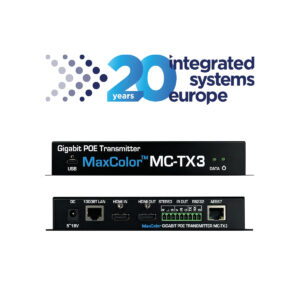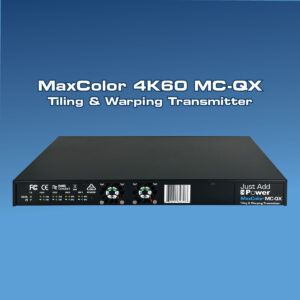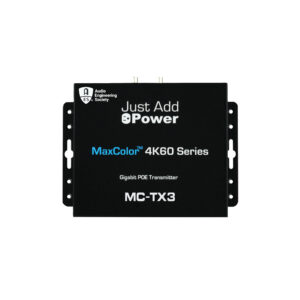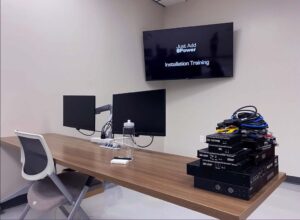At InfoComm 2019, Just Add Power’s Taft Stricklin discusses J+P 3G+ 767DSS Dante Enhanced Sound System Transmitter.
June 20, 2019 Tom LeBlanc
A rundown of the reasons Just Add Power 3G+ 767DSS Dante Enhanced Sound System Transmitter earned a 2019 CI BEST Award for Audio Distribution Systems.
We announced the 2019 CI BEST Awards during Day 1 of InfoComm 2019 and Just Add Power 3G+ 767DSS Dante Enhanced Sound System Transmitter was named tops in the Audio Distribution Systems category.
A big reason the product is resonating with integrators – and with InfoComm 2019 attendees – according to Taft Stricklin, sales team manager at J+P, is the addition of integrated Dante networking. “We had a lot of integrators come to us who are utilizing Dante in commercial projects,” he said during InfoComm 2019. It was “a natural progression for us to add that feature to the transmitter.”
With eight channels in and eight channels out, the J+P 3G+ 767DSS Dante Enhanced Sound System Transmitter “opens up a whole new world of networked audio for commercial integrators,” Stricklin said.
Watch the video as Stricklin talks about J+P 3G+ 767DSS Dante Enhanced Sound System Transmitter winning a 2019 CI BEST Award.
More on J+P 3G+ 767DSS Dante Enhanced Sound System Transmitter (via company):
J+P 3G+ 767DSS Dante Enhanced Sound System Transmitter: Design and Technical Innovation
In addition to distributing Ultra HD and 4K video with HDCP 2.2 over a single Cat-5e cable, the Just Add Power J+P 3G+ 767DSS transmitter takes Ultra HD-over-IP systems to the next level by adding compatibility with Dante and AES67 audio networks, with separate switching of audio and video.
The 767DSS is the industry’s first solution to feature the latest Dante chipset, allowing installers to input up to eight audio channels from the J+P system for playout on Dante-enabled and AES67 devices, and extract up to eight channels from the audio network for playout across the J+P system.
The 767DSS is backwards-compatible with legacy two-channel Dante and AES67 devices, while offering higher performance with lower compression — bitrates of 176.4 and 192 kHz — and latency as low as 0.25 ms on Gigabit Ethernet. Secondary connectivity is built in for glitch-free performance and to provide redundancy for high-availability applications.
The transmitter supports control inputs with RS-232 and IR. As with all models in the J+P lineup, it integrates seamlessly with any generation of the company’s products. This allows integrators to select the J+P solution that best fits the job, providing an evolutionary, scalable, systems-approach to 4K video signal distribution requirements.
J+P 3G+ 767DSS Dante Enhanced Sound System Transmitter: 3 Most Important Features
- Cost-effectively and reliably distributes Ultra HD and 4K video with HDCP 2.2 over a single Cat-5e cable.
- Enables the incorporation of Dante- and AES67-enables devices as part of the Ultra HD over IP system. Up to eight channels can be extracted from the network, embedded in the HD over IP signal, and distributed across the J+P system — and vice versa.
- Support for the latest Dante chipset increases audio and video quality by providing lower compression than legacy two-channel Dante- and AES67-enabled solutions, while offering bitrates of 176.4 and 192 kHz and extremely low latency of 0.25 ms.
J+P 3G+ 767DSS Dante Enhanced Sound System Transmitter: Benefits for Integrators
The 767DSS brings cross-compatibility with hundreds of Dante- and AES67-enabled solutions to the Ultra HD-over-IP system — from digital signal processors to mixing consoles — with separate audio and video switching. The result is that all audio can be played everywhere in a commercial space, whether it’s a projector, video wall, or Dante-enabled amplifier or hanging PoE speaker.
By offering backwards-compatibility with legacy Dante and AES67 devices, the transmitter allows integrators to enjoy these benefits without the expense of purchasing new equipment. For high-availability applications, built-in redundancy provides increased reliability and glitch-free performance.




